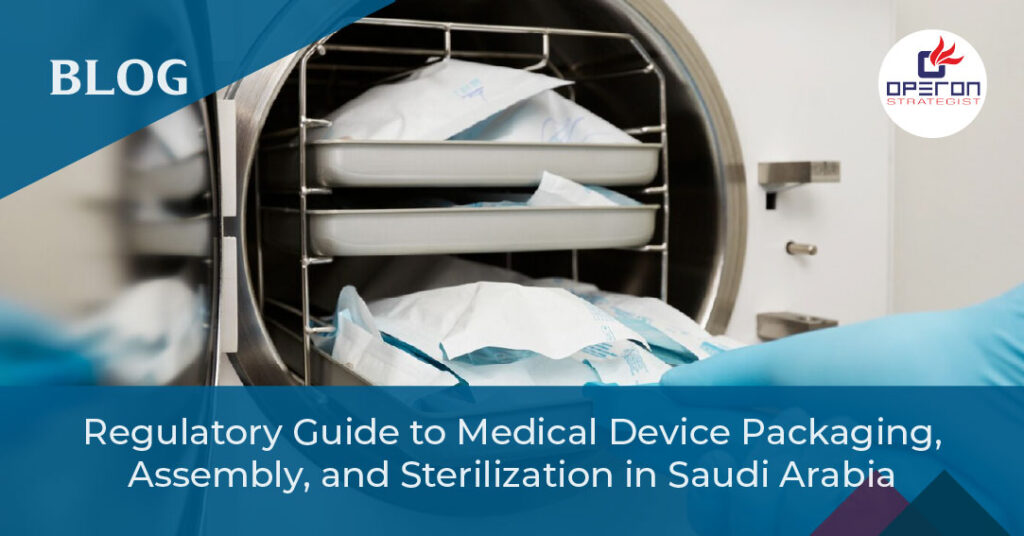Introduction to SaMD in SFDA
With the growing digital transformation in healthcare, Software as a Medical Device (SaMD) has emerged as a key player in enhancing diagnostic accuracy, patient monitoring, and treatment outcomes. As medical software becomes more sophisticated, regulatory bodies worldwide have stepped up efforts to ensure its safety and effectiveness. In Saudi Arabia, the Saudi Food and Drug Authority (SFDA) has implemented a detailed regulatory framework to govern SaMD.
This blog aims to provide an in-depth understanding of SaMD regulations under the SFDA, covering definitions, classifications, registration requirements, and key compliance steps for manufacturers and distributors.
Looking For a Medical Device Regulatory Consultant?
What is SaMD?
Software as a Medical Device (SaMD) is defined as software intended for medical purposes that performs these purposes without being part of a hardware medical device.
Examples include:
- Diagnostic apps (e.g., ECG interpretation software)
- Clinical decision support tools
- AI-powered radiology analysis software
- Mobile applications used for chronic disease management
SFDA adopts the definition of SaMD in alignment with the International Medical Device Regulators Forum (IMDRF) guidelines, which provide a global foundation for regulatory harmonization.
SFDA’s Role in Regulating SaMD
The SFDA is the national regulatory authority in Saudi Arabia responsible for the safety, quality, and efficacy of medical devices, including SaMD. It operates through its Medical Devices Sector (MDS), which sets out clear regulatory pathways and classifications for medical software products.
Classification of SaMD under SFDA
The SFDA classifies medical devices, including SaMD, based on risk level, as outlined in the Guidance on Medical Devices Classification (MDS-G5). SaMD falls under one of the following classes:
- Class A – Low risk
- Class B – Moderate risk
- Class C – High risk
- Class D – Highest risk
Classification depends on factors such as:
- Intended use
- Impact of the software on the patient
- Criticality of the information provided
For instance:
- A symptom checker app may be Class A.
- AI-based diagnostic software influencing clinical decisions could be Class C or D.
Key Regulatory Requirements for SaMD in SFDA
- Medical Device Marketing Authorization (MDMA)
All SaMD intended for sale or use in Saudi Arabia must obtain an MDMA license from SFDA. This involves:
- Submitting technical documentation
- Providing risk classification and conformity assessment evidence
- Demonstrating safety and performance via clinical data
- UDI & Listing in Saudi-DI
Each SaMD must be assigned a Unique Device Identification (UDI) and be listed in the Saudi-DI (Saudi Database for Medical Devices). This ensures traceability and regulatory visibility.
- Authorized Representative (AR)
Foreign manufacturers must appoint a local Authorized Representative in Saudi Arabia to act as a liaison with the SFDA. The AR handles registration, post-market surveillance, and regulatory communication.
- Quality Management System (QMS)
Manufacturers must implement a QMS aligned with ISO 13485. Evidence of compliance is necessary for registration.
- Post-Market Surveillance (PMS)
After market entry, SaMD manufacturers are obligated to:
- Monitor device performance
- Report adverse events
- Implement corrective actions
- Submit periodic safety updates
Technical File Requirements for SaMD
To obtain SFDA approval, your SaMD technical documentation must include:
- Device description and intended use
- Software architecture and development lifecycle
- Risk management (ISO 14971)
- Clinical evaluation and supporting evidence
- Cybersecurity measures
- Labeling and user manual (with Arabic translation, if applicable)
SFDA’s Digital Health and AI Focus
SFDA actively supports AI and machine learning in digital health, but emphasizes the need for:
- Transparency in algorithms
- Robust validation frameworks
- Continuous learning oversight
- Ethical handling of patient data
Operon Strategist’s Role in SaMD SFDA Compliance
As a specialized regulatory consulting firm with deep expertise in medical device and SaMD compliance, Operon Strategist offers end-to-end support for SFDA approvals, including:
✔ Risk Classification & Regulatory Strategy
We help you determine the correct SaMD class and build a tailored regulatory roadmap aligned with SFDA expectations.
✔ Technical Documentation Preparation
Our experts assist in compiling a comprehensive technical file, including clinical evaluation reports, software lifecycle documentation, and cybersecurity plans.
✔ MDMA Submission & SFDA Liaison
Operon Strategist facilitates the Medical Device Marketing Authorization (MDMA) submission process and communicates with the SFDA on your behalf to ensure smooth and timely approvals.
✔ Quality Management System (QMS) Setup
We support the implementation and documentation of QMS aligned with ISO 13485, a mandatory requirement for SFDA compliance.
✔ Post-Market Compliance
Our team guides post-market surveillance, vigilance reporting, and ongoing regulatory updates to help you stay compliant throughout the product lifecycle.
✔ Authorized Representative (AR) Services
Through our network of local partners, we can help you establish a compliant Authorized Representative relationship, crucial for foreign manufacturers.




